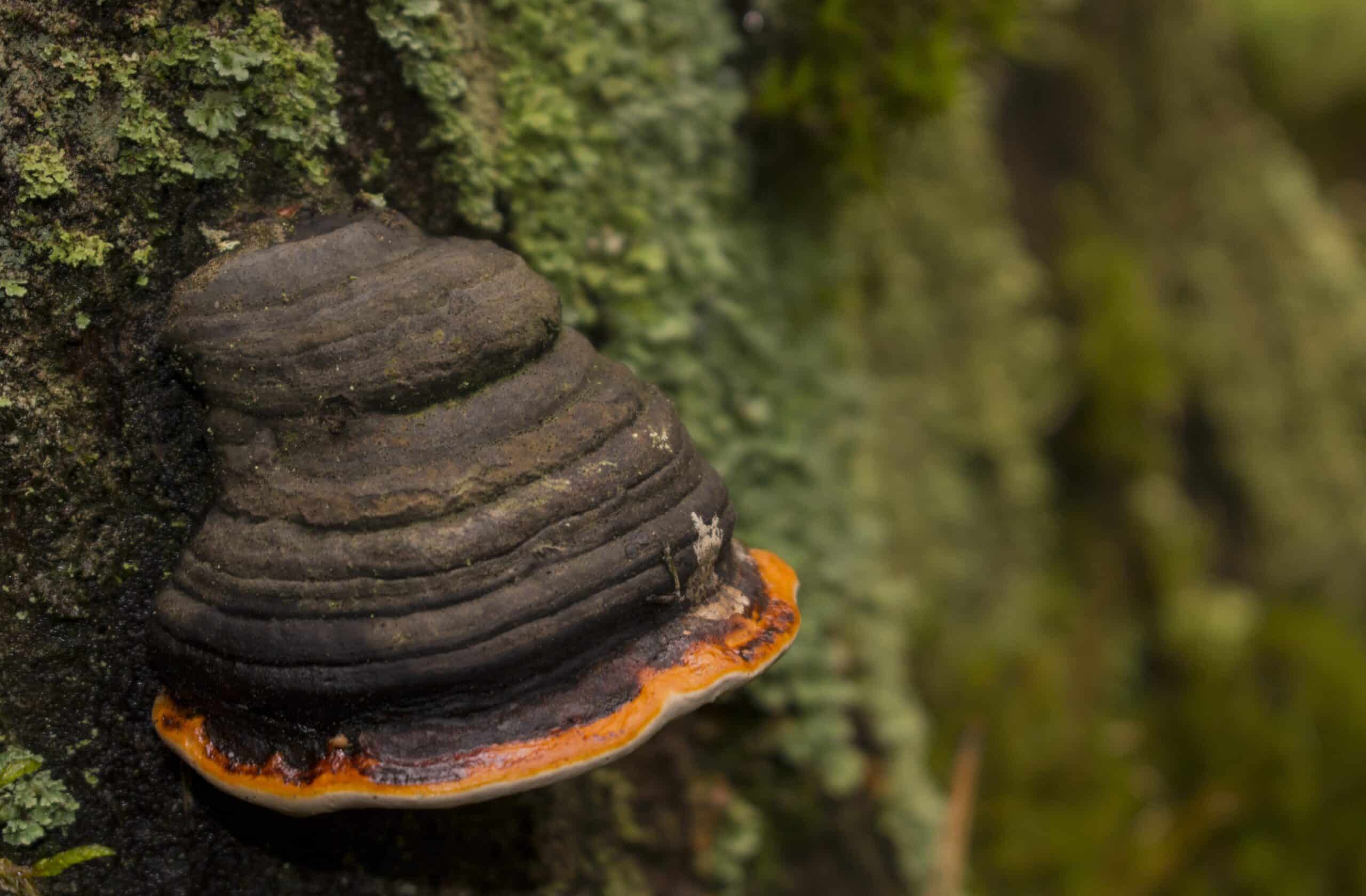This fungus is a circumpolar that grows around the world in its preferred habitat, it reproduces through spores and feeds on organic matter, and it grows on birch trees that prefer northern climates in places like Canada, Alaska, Sweden, and Russia.
Chaga spores float through the air during reproduction, hoping to land on an open wound of a birch tree; bugs and squirrels feeding on branches for sap or broken branches cause these wounds the spores need.
If the spores successfully land on an appropriate spot they enter the tree and slowly spread throughout the wood in a slow process that can take up to 80 years, until the Chaga will finally kill its host tree. Once the host tree is dead the Chaga mushroom will use the inside of the tree to create fruiting bodies which will then spread more spores into the nearby woodlands.
The part of the Chaga of interest to be consumed is the mycelium, which is a network of vegetative fungal growth, rather than sexual fungal growth. In terms of an apple tree the wood and leaves would be the equivalent to the mycelium, and the apples would be comparable to the fruiting part of the mushroom.
Chaga mycelium appears as an abnormal growth which can be seen on the outside of the birch tree, which grows hard and dense; they appear black on the outside and orange on the inside. A single birch tree can produce Chaga for decades as mycelium growth appears far before the fungus kills the tree. Chaga is harvested from the wild by hand, and much care is taken when harvesting from the side of the birch to ensure minimal injury to the tree.
Chaga is said to have great healing potential by centuries old folk medicines, where it is sometimes called black gold. There are no clinical trials involving humans published to date, but recent decades have seen an uptick in scientific research to this fungus, and there are now dozens of animal and human cancer cell studies using Chaga with positive findings.
Chaga has been shown to decrease levels of glucose in the blood of diabetic mice. Regular ingestion of a fermented mixture was shown to suppress body weight gain in mice being fed high fat diets. Both of these findings may be beneficial as 1 in 3 Americans are predicted to either be prediabetic or a diabetic by the year 2050.
Chaga is a surprisingly great source for inflammation fighting antioxidants, by weight it can have up to 150 times the load found in blueberries. However, I would still prefer to eat a lovely bowl of blueberries as opposed to the cup of woody fungus. The fungus is also reported to be an effective antibiotic, anti-inflammatory, and helps with stomach ulcers.
Recently Chaga was shown to be effective in destroying human lung cancer cells while leaving healthy normal cells alone; and other studies have shown similar anti-cancer properties against leukemia, as well as colon and cervical cancers.
Evidence also shows that Chaga can help to elevate immune systems in mice, this may be useful for patients undergoing chemotherapy for cancer that have weakened immune systems due to the harshness of treatment.
In its natural state Chaga is not bioactive, plus it is as hard as wood and can be bigger than a softball. As such most commonly it is broken into chunks the size of peppercorns and often brewed as tea. It needs to be boiled for at least 15 minutes to reap therapeutic effects.
Other methods including extraction via alcohol which can remove all of the water soluble compounds and create a higher potency therapeutic. Fermentation with bacteria is a more challenging way to turn this mushroom into medicine, however, research on this method are still in infancy but showing promise.
Chaga is also sold by various companies in different forms, most commonly as tea, powders for smoothies, as a tincture, and as an ingredient mixed in with other therapeutic mushrooms. One company even sells Chaga in coffee. Don’t be surprised if you see Chaga appear more within the next few years, as research is emerging with great promise.




